The Philippines holds centuries of layered history shaped by trade, colonisation, and native resistance. The Historical Places of the Philippines bring together faith, conflict, and resilience in a way that still shapes everyday life, where old rituals blend with modern rhythms. Streets of old towns, remains of battle sites, and timeworn churches still carry the weight of those years. Walking through these spaces reveals stories of bravery, faith, and transformation that shaped communities long before independence. They are places that hold memories, not just history.
Top Historical Places Of The Philippines
These historical places of Philippines across islands and provinces. These historical places preserve stories of triumph, struggle, and devotion.
1. Fort Santiago, Manila
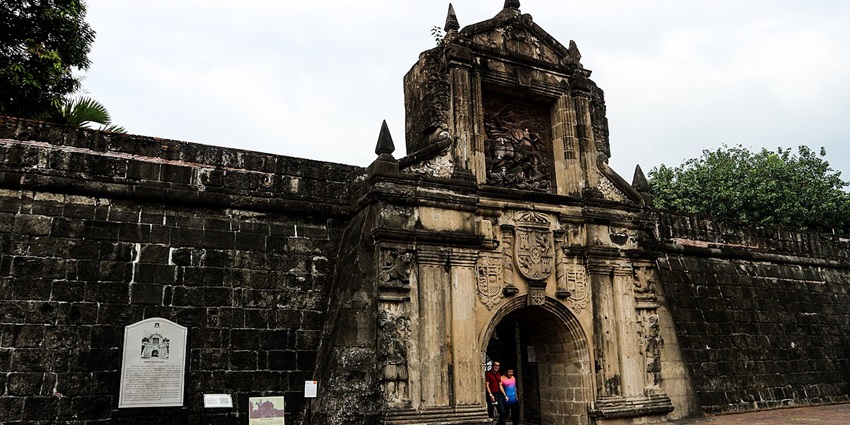
Photo: Elmer B. Domingo / Wikimedia Commons
Santiago remains one of the most powerful historical places in the Philippines. Built in 1593 during the Spanish colonial period, it served as a fortress for Spanish conquistadors and later became a prison for political detainees. José Rizal, the country’s national hero, was famously held here before his execution in 1896, and his final footsteps are preserved in bronze along a path inside the fort. The structure holds its original dungeons, arched gateways, and watchtowers facing the Pasig River.
How To Reach: Take the LRT-1 to Central Terminal, then a jeepney or walk to Intramuros.
Cost: ₱75 for adults, ₱50 for students and senior citizens
Timings: 9 AM to 8 PM
Nearby Attractions: Manila Cathedral, Rizal Park, Casa Manila Museum
2. Rizal Shrine, Calamba, Laguna
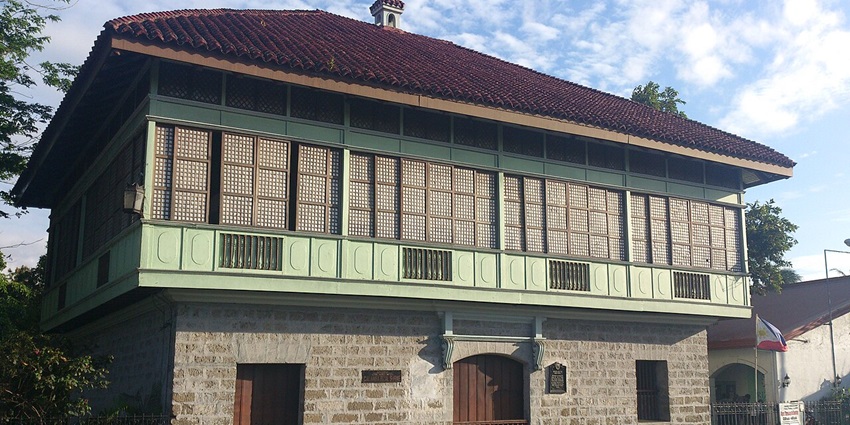
Photo: RaywollesenFortes / Wikimedia Commons
Calamba in Laguna holds deep significance in Filipino memory, and at its centre stands the Rizal Shrine, the birthplace of José Rizal. Built using traditional adobe and hardwood, with wide capiz windows and a red-tiled roof. Rooms are filled with period furniture and replicas of the family’s belongings, including kitchen tools, books, and writing instruments. A hand-dug well still sits in the backyard, shaded by trees planted in honour of Rizal’s love for nature. Upstairs, photographs, letters, and published works give visitors a sense of how deeply he thought and how far he saw.
How To Reach: Board a bus to Calamba from Buendia or Cubao terminals, then take a tricycle to the shrine.
Timings: 8 AM – 4 PM (Tuesday to Sunday)
Nearby Attractions: Calamba Church, SM City Calamba, Rizal Monument
3. Barasoain Church, Malolos, Bulacan
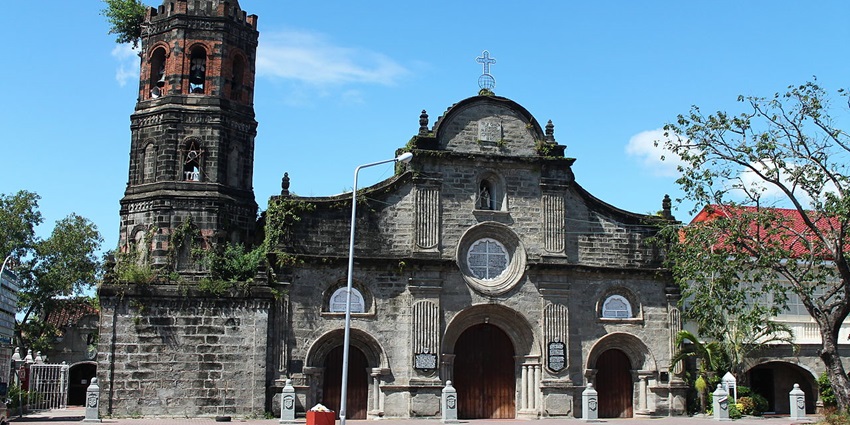
Photo: Aerous / Wikimedia Commons
Barasoain Church holds a place of honour among the most important historical places of Philippines. The church’s façade is built from adobe, with curved windows and heavy wooden doors that have stood through earthquakes and war. Its bell tower and interior pulpit remain untouched by time. Inside, the air carries the gravity of speeches once made beneath the vaulted ceilings. A small museum on-site displays handwritten documents, ceremonial furniture, and rare images from the revolutionary period.
How To Reach: Ride a bus to Malolos, then take a jeep or tricycle to the church.
Timings: 6 AM – 6 PM
Nearby Attractions: Casa Real Shrine, Malolos Cathedral, Paseo del Congreso
4. Bahay Na Bato, Luna, La Union
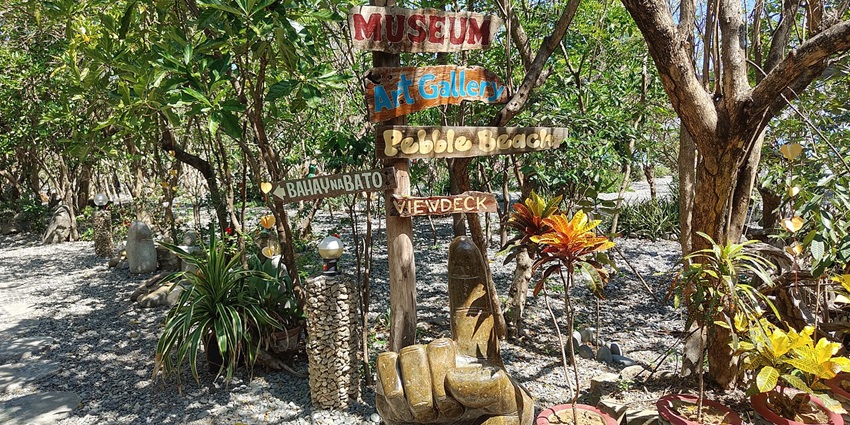
Photo: BlueHairPrncss / Wikimedia Commons
Bahay na Bato, a coastal structure made from pebbles, driftwood, and native stone. The house rises as a tribute to the landscape and people who built it. Its walls are thick with volcanic rock, while its grounds are scattered with carved figures that reflect men fishing, women cooking, and children playing. The space is filled with folk-inspired artworks and wooden sculptures made by local artists. What makes Bahay na Bato one of the more unique historical places of the Philippines is that it speaks in the quiet language of tradition, of homes built with bare hands.
How To Reach: Travel via bus to San Fernando, La Union, then take a jeep to Luna town.
Cost: ₱20
Timings: 6 AM – 7 PM
Nearby Attractions: Pindangan Ruins, Baluarte Watchtower, La Union Pebble Beach
5. The Ruins, Talisay, Negros Occidental
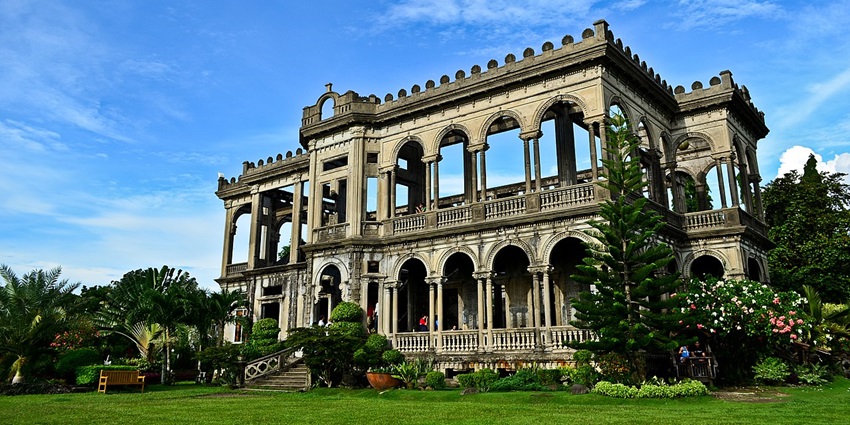
Photo: Ninya Regalado / Wikimedia Commons
The Ruins, a structure once filled with elegance, is now revered for its quiet strength. Though its roof and interiors were destroyed during the Second World War, the Italian-inspired columns and thick walls remain, their surface glowing softly under the late afternoon sun. What sets this apart from other historical places of the Philippines is the personal story it holds, a tale of loss, love, and legacy etched in concrete and sugar. The mansion is surrounded by landscaped gardens, with benches that offer a view of the sunset through the frame of its open windows.
How To Reach: Take a jeep or tricycle from Bacolod City to Talisay City
Cost: ₱150 for adults, discounts for children and seniors
Timings: 8 AM – 8 PM
Nearby Attractions: Campuestohan Highland Resort, Bacolod Public Plaza, Silay Ancestral Houses
6. Miagao Church, Iloilo
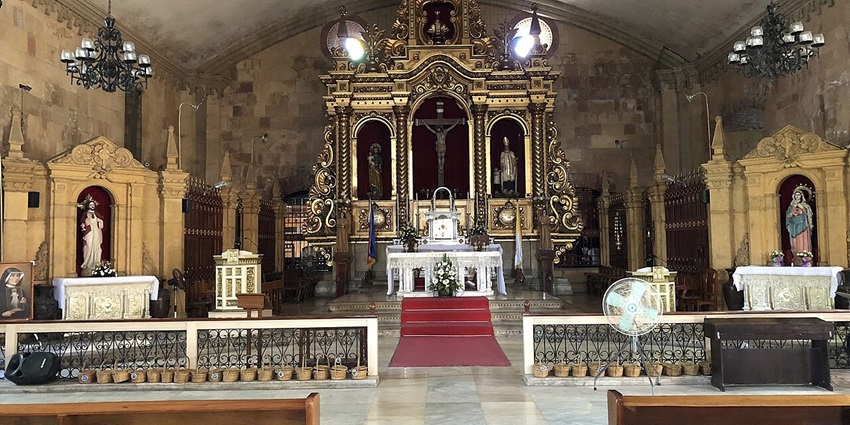
Photo: Ed it12 / Wikimedia Commons
Miagao Church stands firm with its massive walls and warm sandstone glow. Its thick buttresses and two watchtower-like bell towers show just how real that threat once was. What makes Miagao unlike any other among the historical places of the Philippines is the unique detail on its facade. Here, carved into stone, are tropical plants, St. Christopher carrying the Child Jesus, and native trees that grow nowhere else in colonial buildings. The stone itself was quarried from the surrounding hills and carried to the site by local hands.
How To Reach: Ride a jeepney or bus from Iloilo City bound for Miagao town
Timings: 6 AM – 6 PM
Nearby Attractions: Guimbal Church, Tigbauan Church, Iloilo River Esplanade
7. Intramuros, Manila

Photo: Patrick Roque / Wikimedia Commons
Intramuros stands in the heart of Manila, once the seat of Spanish colonial power in the islands. Built during the 1500s, it became the centre of government, religion, and education, surrounded by thick stone walls. Many of the original buildings were damaged or destroyed during the war, yet several of the stone gates, bastions, and churches remain. What sets it apart from other historical places of the Philippines is how Intramuros still functions as part of the city, offering not just memory but activity, from masses at San Agustin to students walking to class.
How To Reach: LRT-1 to Central Station, then a short walk or pedicab ride
Timings: 8 AM – 6 PM
Nearby Attractions: San Agustin Church, Fort Santiago, National Museum of Fine Arts
8. Cape Bojeador Lighthouse, Burgos, Ilocos Norte
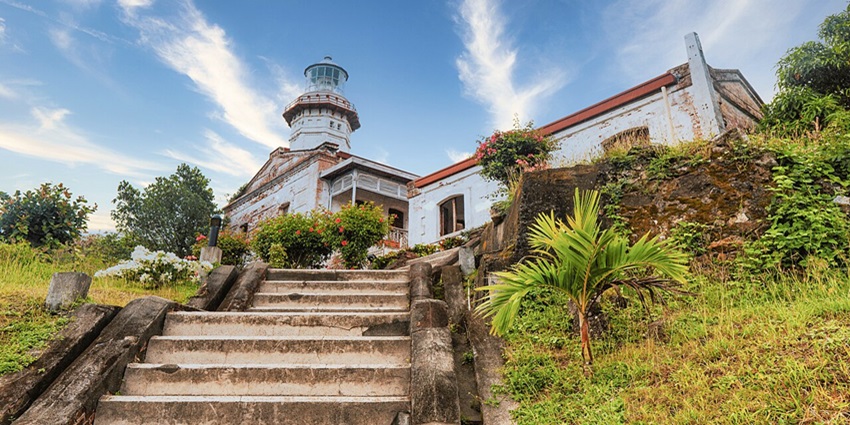
Photo: Luzviminda7641 / Wikimedia Commons
Cape Bojeador Lighthouse stands on a hill in Burgos, built in 1892 to guide ships along the northern waters of Luzon. It was the first light sailors saw when approaching from the north, helping them avoid the rocky coast below. Many years have passed, but the structure remains solid. At the top, you’ll see a wide view of the coastline, stretching far beyond the cliffs. Among all the historical places of the Philippines, this is one of the few still serving the purpose it was built for guiding ships and offering travellers a quiet place to take in the sea.
How To Reach: Travel via bus or van to Laoag, then take a tricycle to Burgos
Cost: ₱20
Timings: 8 AM – 6 PM
Nearby Attractions: Kapurpurawan Rock Formation, Bangui Windmills, Burgos Museum
9. Corregidor Island, Cavite
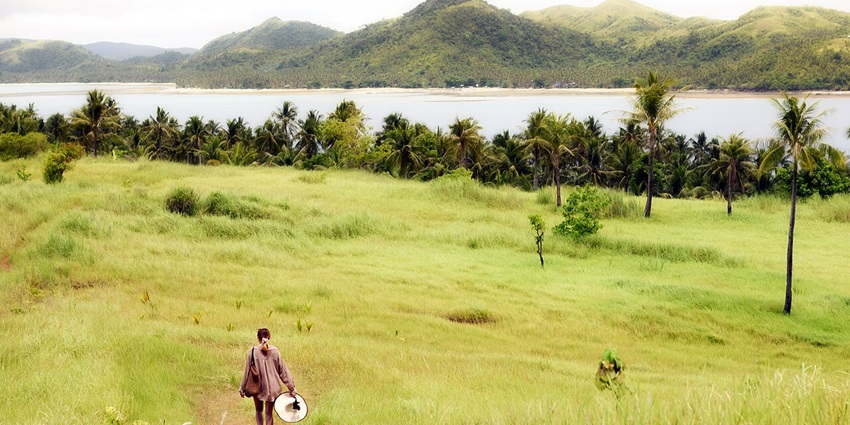
Photo: Michael Angelo Luna / Wikimedia Commons
Corregidor Island, which was once central to the country’s defence. During the Second World War, it became the final refuge for Filipino and American soldiers, holding out until the very end. The island was bombed heavily, leaving behind skeletal buildings, shattered watchtowers, and blackened tunnels. Among these, the Malinta Tunnel draws the most attention; it once sheltered troops, served as a hospital, and operated as a military headquarters deep beneath the rock. Grass grows over broken walls, and gun barrels now rust in silence.
How To Reach: Take a ferry from the Esplanade Seaside Terminal in Manila Bay
Cost: ₱2,500 (tour package)
Timings: 7 AM – 5 PM
Nearby Attractions: Pacific War Memorial, Malinta Tunnel, Battery Way
10. San Agustin Church, Manila
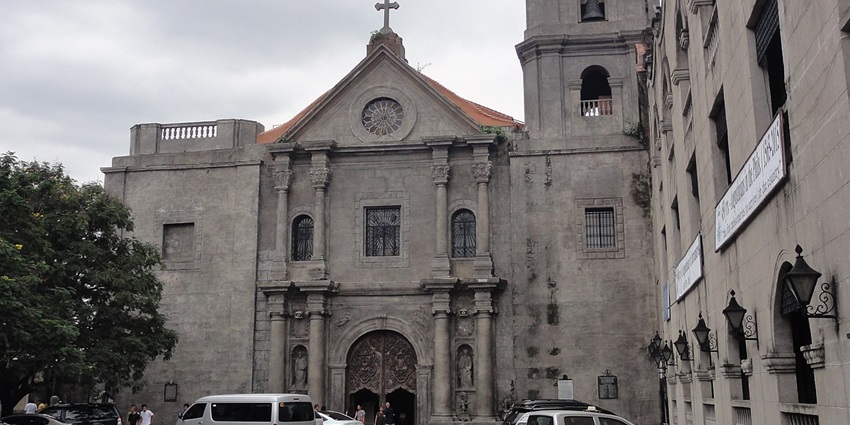
Photo: Patrick Roque / Wikimedia Commons
The Spanish Augustinian friars, San Agustin Church have withstood earthquakes, fires, and the destruction of war. Because of its thick walls, made of adobe and volcanic stone, it has endured much where others crumbled. The interior is dimly lit, with chandeliers hanging above carved choir stalls and an intricately painted ceiling that appears three-dimensional. The adjacent monastery now serves as a museum, housing centuries-old manuscripts, liturgical items, and religious art. As one of the key historical places of the Philippines, this church represents survival through every period of upheaval.
How To Reach: Located in Intramuros; accessible via LRT-1 to Central, then a short walk
Cost: ₱200
Timings: 8 AM -12 PM and 1 PM – 6 PM
Nearby Attractions: Manila Cathedral, Fort Santiago, Casa Manila
History in the Philippines is not hidden in glass displays. It stands in old churches where bells still ring, in worn-out streets walked by heroes, and in homes where families once gathered under wooden beams. The historical places of the Philippines carry the weight of real moments, some painful, others filled with hope. Explore the packages offered by TripXL for unforgettable experiences.
Cover Photo: Gary Todd / Wikimedia Commons


 WhatsApp
WhatsApp
 Twitter
Twitter









